Nelleke Oostdijk
Event Causality Identification with Causal News Corpus -- Shared Task 3, CASE 2022
Nov 22, 2022



Abstract:The Event Causality Identification Shared Task of CASE 2022 involved two subtasks working on the Causal News Corpus. Subtask 1 required participants to predict if a sentence contains a causal relation or not. This is a supervised binary classification task. Subtask 2 required participants to identify the Cause, Effect and Signal spans per causal sentence. This could be seen as a supervised sequence labeling task. For both subtasks, participants uploaded their predictions for a held-out test set, and ranking was done based on binary F1 and macro F1 scores for Subtask 1 and 2, respectively. This paper summarizes the work of the 17 teams that submitted their results to our competition and 12 system description papers that were received. The best F1 scores achieved for Subtask 1 and 2 were 86.19% and 54.15%, respectively. All the top-performing approaches involved pre-trained language models fine-tuned to the targeted task. We further discuss these approaches and analyze errors across participants' systems in this paper.
The Causal News Corpus: Annotating Causal Relations in Event Sentences from News
Apr 25, 2022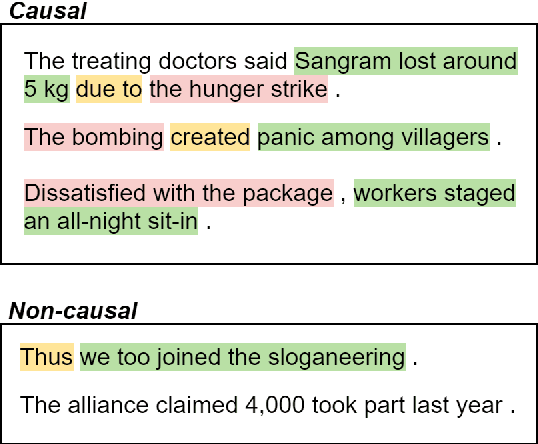
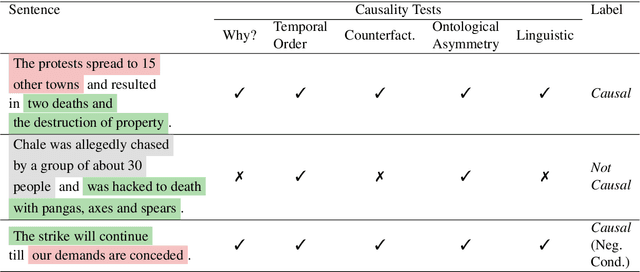
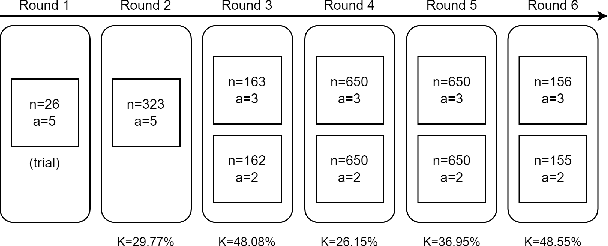
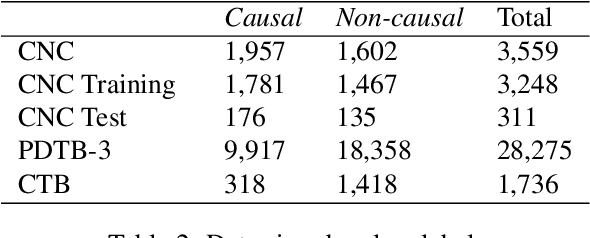
Abstract:Despite the importance of understanding causality, corpora addressing causal relations are limited. There is a discrepancy between existing annotation guidelines of event causality and conventional causality corpora that focus more on linguistics. Many guidelines restrict themselves to include only explicit relations or clause-based arguments. Therefore, we propose an annotation schema for event causality that addresses these concerns. We annotated 3,559 event sentences from protest event news with labels on whether it contains causal relations or not. Our corpus is known as the Causal News Corpus (CNC). A neural network built upon a state-of-the-art pre-trained language model performed well with 81.20% F1 score on test set, and 83.46% in 5-folds cross-validation. CNC is transferable across two external corpora: CausalTimeBank (CTB) and Penn Discourse Treebank (PDTB). Leveraging each of these external datasets for training, we achieved up to approximately 64% F1 on the CNC test set without additional fine-tuning. CNC also served as an effective training and pre-training dataset for the two external corpora. Lastly, we demonstrate the difficulty of our task to the layman in a crowd-sourced annotation exercise. Our annotated corpus is publicly available, providing a valuable resource for causal text mining researchers.
COVCOR20 at WNUT-2020 Task 2: An Attempt to Combine Deep Learning and Expert rules
Sep 07, 2020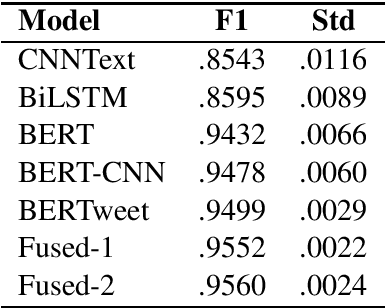
Abstract:In the scope of WNUT-2020 Task 2, we developed various text classification systems, using deep learning models and one using linguistically informed rules. While both of the deep learning systems outperformed the system using the linguistically informed rules, we found that through the integration of (the output of) the three systems a better performance could be achieved than the standalone performance of each approach in a cross-validation setting. However, on the test data the performance of the integration was slightly lower than our best performing deep learning model. These results hardly indicate any progress in line of integrating machine learning and expert rules driven systems. We expect that the release of the annotation manuals and gold labels of the test data after this workshop will shed light on these perplexing results.
 Add to Chrome
Add to Chrome Add to Firefox
Add to Firefox Add to Edge
Add to Edge